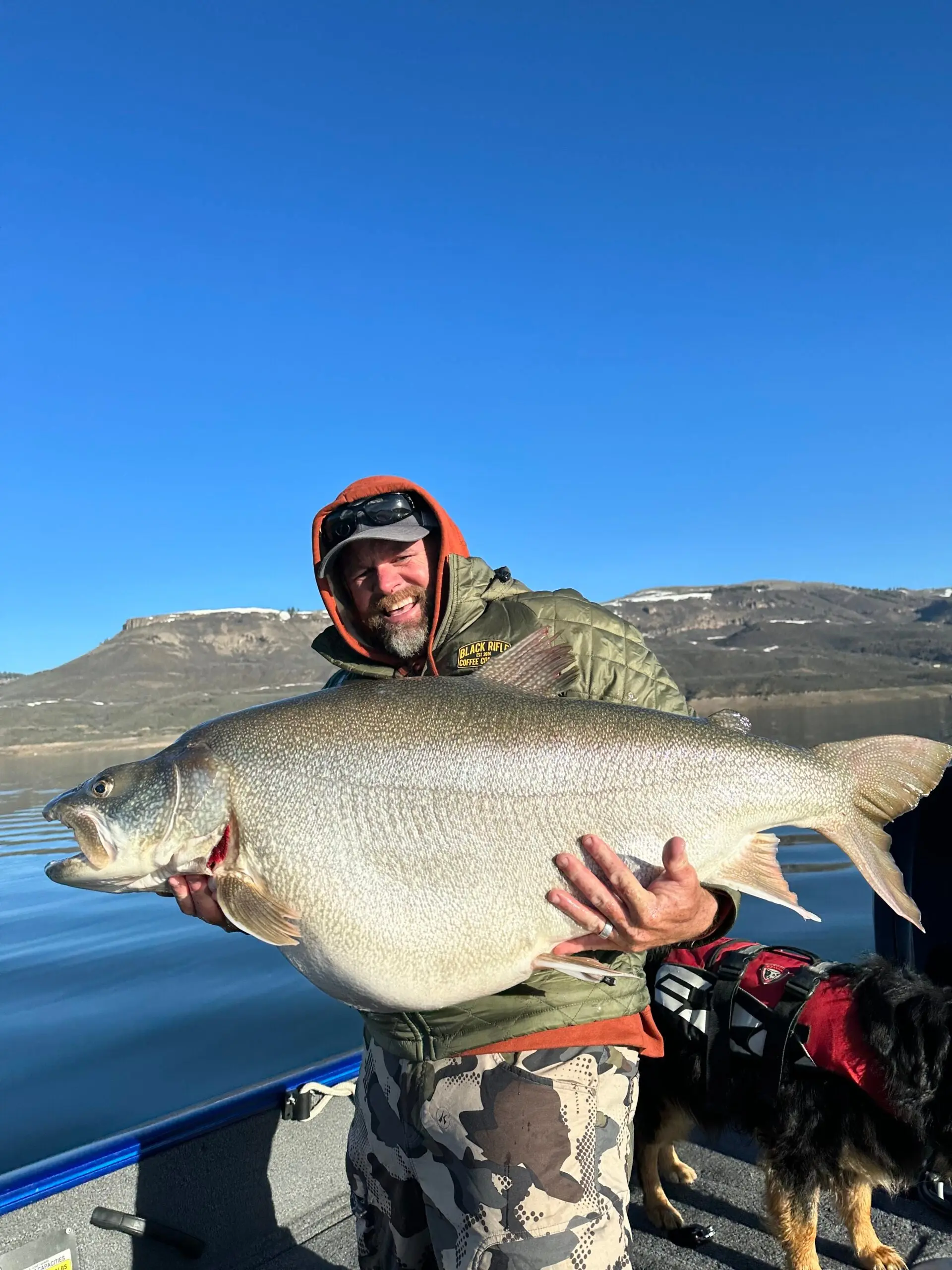Scott Enloe of Gunnison, Colorado had a remarkable day on the water on Friday, May 5, when he boated a potential world-record lake trout.
Enloe was fishing at Blue Mesa Reservoir, Colorado’s largest body of water and a known hotspot for big trout. It was the first day this year that boaters could access the lake. “The boat ramp opened on Friday morning at 5:30 a.m. for the first time this year,” Enloe tells Field & Stream. “Our ice had just melted off on Wednesday. We were third in line to put in.
Enloe was fishing with his son Hunter, a guide for Sport Fish Colorado.
Hunter was the first one on the board that morning, catching a 31-pounder at around 6:45 a.m. “We jig fish,” explains Enloe. “We don’t ever troll. We’ve fished the lake for several years now and have learned the places to go where big fish hang out. We catch a lot of 30-plus-pound fish. We’ve broken the 40-pound mark. We were always looking to break the 50-pound mark.”
About an hour later, the father-son duo saw something strange on their sonar. “We were fishing in about 40 feet of water. We saw two big fish on the fish finder. We can normally tell the size of them, but this mark was distinctively different,” says Enloe. “Usually, the marks are yellow and orange, but this one was purple and teal outlined in black. My son was like, ‘That must be two fish!’”
“Then my line popped. I knew it ate the jig,” says Enloe. “Big lake trout are notorious for coming straight to the surface, and this one did that, then went on an extreme dive. I thought it looked like a 50-pounder. I didn’t know I was 23 pounds off…I’ve killed a lot of deer and elk, but once they get a certain size, like a whitetail over 200 inches, I can’t judge them, because it’s not common to see. This was like that.”
The fish took out a bunch of drag and spent a while sticking close to the bottom. Enloe was using an Okuma rod with an Abu Garcia baitcasting reel spooled with 10-pound Segar fluorocarbon
—which made it hard to move such a heavy fish. The fish had bit a locally-made GSO Fishing Jig
made with premium Trokar hooks.
After a 13-minute back-and-forth fight, Enloe managed to bring the fish to the surface. Then, it took several tries to bring the whopper fish onto the boat because it didn’t fit easily into their net—despite using the biggest one Frabill makes. But eventually, Enloe and his son managed to heave it aboard their boat.

The fish may go down as the biggest lake trout ever recorded. Scott Enloe
“My son’s exact words were ‘mega, monster, giant.’ And it was,” says Enloe. “We had stayed calm until it came into the boat, and then we came unglued. We were going in circles, hugging and high-fiving each other. We were like, ‘What just happened?’ My son was like, ‘What is it?’ I was like, ‘It’s a record! It’s a record!’ It was just too large.”
Enloe immediately knew he wanted to release the fish, as he does with all big lakers. The fish was too big to fit into the live well, but he was able to fit its head and gills in it while they got ready to measure and weigh it. The fish taped out at 47 inches long and had a girth of 37 inches. The fish broke one scale, but the other put it at 73.29 pounds. The fish stands to set multiple IGFA world records, besting both the all-tackle weight record, a 72-pounder caught in the Northwest Territories in 1995, and the all-tackle length record, which is shared between two 43-inchers also caught in Canada.
**Read Next: The Biggest Trout Ever Caught
**
After snapping photos and taking measurements of the fish, Enloe released it. He says the fish swam off strong, and they watched it descend back to the bottom of the lake on their sonar. After making the epic catch, Enloe and his son called it a day and headed home, knowing the epic catch would be next-to-impossible to top.
“We’ll be back out there one day soon catching 30- and 40-pounders and loving it,” he says. “But right now, I’m just overwhelmed by what happened.”
![Field & Stream [dev]](https://images.ctfassets.net/fbkgl98xrr9f/1GnddAVcyeew2hQvUmrFpw/e4ca91baa53a1ecd66f76b1ef472932b/mob-logo.svg)





